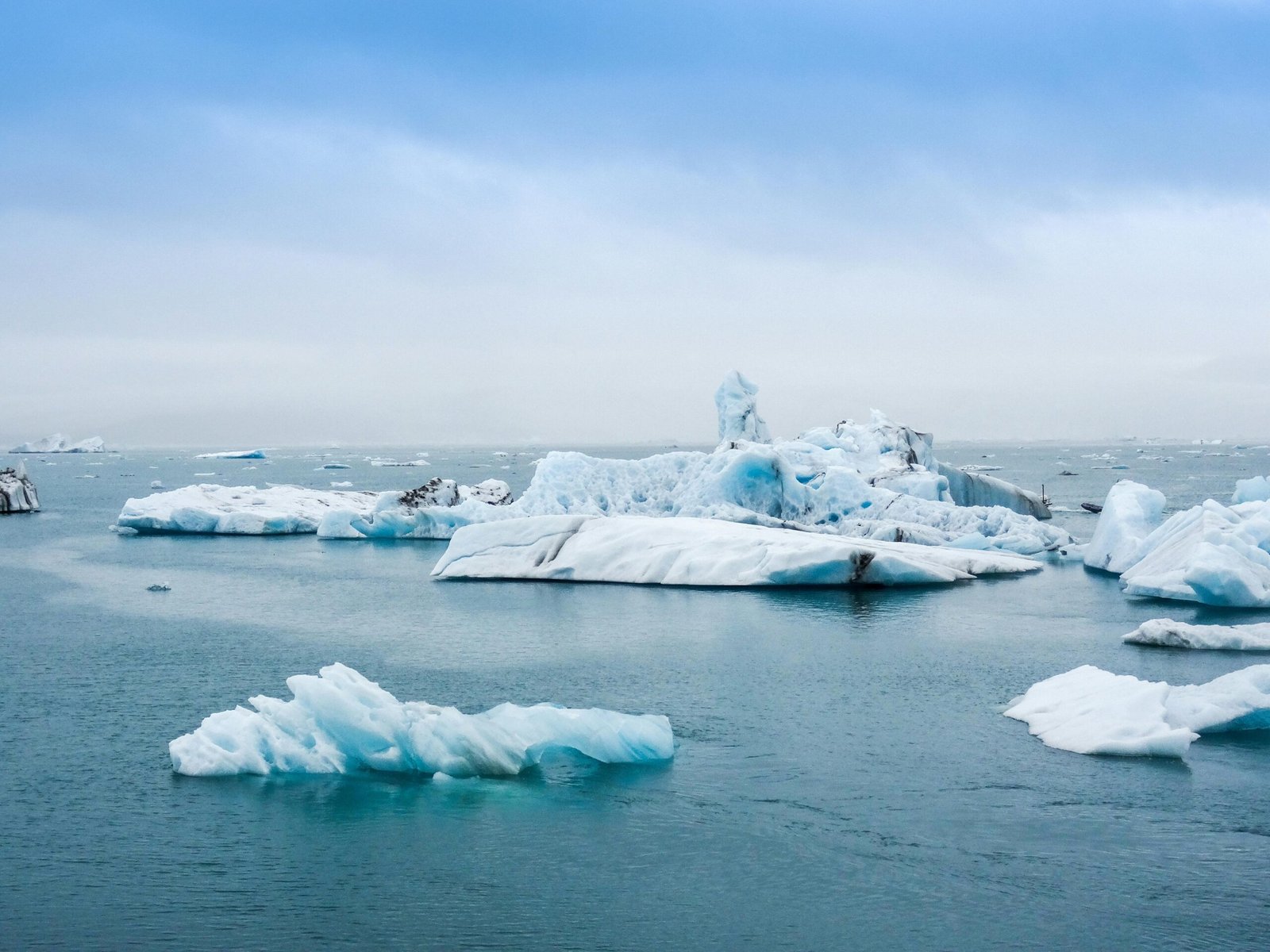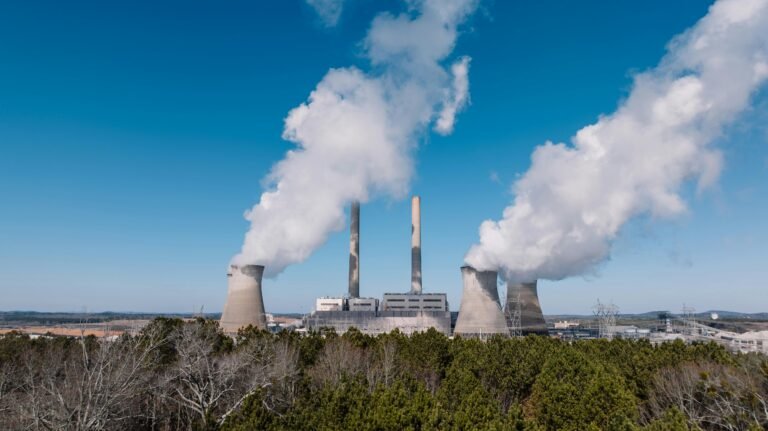 Climate change is a topic that has dominated discussions globally, often tied to rising temperatures. A 1.5°C increase in global temperature is frequently highlighted as a critical threshold. Crossing this limit is seen as potentially devastating, but climate scientists have identified various other climate change tipping points that warrant serious attention. These points signal moments when climate damage becomes irreversible.
Climate change is a topic that has dominated discussions globally, often tied to rising temperatures. A 1.5°C increase in global temperature is frequently highlighted as a critical threshold. Crossing this limit is seen as potentially devastating, but climate scientists have identified various other climate change tipping points that warrant serious attention. These points signal moments when climate damage becomes irreversible.
So, what exactly are these tipping points, and how close are we to crossing them? More importantly, what can be done to prevent these irreversible changes?
What Is a Climate Change Tipping Point?
A climate change tipping point is an irreversible change in the Earth’s environmental systems that triggers long-lasting and often catastrophic effects. The Intergovernmental Panel on Climate Change (IPCC) defines these moments as critical thresholds where significant and irreversible damage occurs, severely impacting life on Earth.
Tipping points can be gradual or sudden, and they pose serious risks, including:
- Self-perpetuating change: Once a tipping point is crossed, it can lead to a chain reaction, making it harder to reverse the damage.
- Abruptness: Some tipping points can occur unexpectedly.
- Global impact: While some tipping points are region-specific, many have far-reaching consequences.
- Devastating outcomes: These events could trigger severe biodiversity loss, sea level rise, and more extreme weather conditions.
Preventing these tipping points through global mitigation efforts is crucial to limiting climate change and reversing some of the damage already done.
In 2022, experts identified the most critical tipping points, broken into nine global core tipping elements and seven regional impact tipping points. These are measured by the event’s threshold (usually in °C), timescale, and the maximum impact on temperatures.
Global Core Tipping Points
The most significant global core tipping points mainly relate to ice collapse and ocean currents. Here’s a breakdown:
1-4. Sea Ice and Ice Sheet Collapses
Melting ice sheets are among the most concerning tipping points due to their impact on global sea levels and temperatures.
| Ice Sheet or Sea Ice | Threshold | Timescale | Max Global Impact |
| Greenland Ice Sheet | 1.5°C | 10,000 years | +0.13°C |
| West Antarctic Ice Sheet | 1.5°C | 2,000 years | +0.05°C |
| East Antarctic Ice Sheet | 7.5°C | 10,000 years | +0.6°C |
| Arctic Winter Sea Ice | 6.3°C | 20 years | +0.6°C |
5. Atlantic Meridional Overturning Circulation (AMOC) Collapse
The AMOC is a vital ocean current responsible for regulating weather patterns and maintaining ocean salinity. A collapse could cause drastic shifts in global weather and marine life. The threshold is estimated at 4.0°C, with a timescale of 50 years and a maximum global cooling effect of -0.5°C.
6. Labrador-Irminger Seas/SPG Convection Collapse
Convection in the Labrador-Irminger Seas supports the AMOC by helping cold water sink. The collapse of this system could significantly alter ocean currents, with an estimated threshold of 1.8°C and a timescale of 10 years.
7. East Antarctic Subglacial Basins Collapse
This tipping point involves the collapse of subglacial basins under Antarctica’s ice sheet. The threshold is 3.0°C, with a 2,000-year timescale and a potential +0.5°C global temperature increase.
8. Amazon Rainforest Dieback
The Amazon is the world’s largest tropical rainforest, acting as a vital carbon sink. A dieback would drastically increase carbon emissions, with a threshold of 3.5°C and a 100-year timescale. The global temperature could rise by +0.2°C.
9. Boreal Permafrost Collapse
Boreal permafrost, found in Arctic regions, helps regulate climate by storing massive amounts of carbon. Its collapse would release large quantities of greenhouse gases, with an estimated threshold of 4.0°C and a 50-year timescale, raising global temperatures by +0.4°C.
Regional Impact Tipping Points
Several other climate tipping points are region-specific but carry global implications. Here’s an overview of the seven regional tipping elements.
10. Low-Latitude Coral Reef Dieoff
Coral reefs are among the first ecosystems to be affected by rising temperatures, leading to widespread coral bleaching. The threshold is 1.5°C, and recovery is uncertain. However, if unchecked, the loss of coral reefs could devastate marine ecosystems.
11. Abrupt Thawing of Boreal Permafrost
While gradual thawing is already concerning, abrupt permafrost thawing could be catastrophic, releasing even more methane and carbon dioxide into the atmosphere. The threshold is 1.5°C, with a 200-year timescale.
12. Abrupt Loss of Barents Sea Ice
The loss of sea ice in the Barents Sea could have unpredictable consequences for Arctic weather patterns, with a threshold of 1.6°C and a 25-year timescale.
13. Mountain Glacier Loss
Mountain glaciers supply water to millions of people, but rising temperatures are causing glaciers to melt at unprecedented rates. The estimated threshold is 2.0°C, with a 200-year timescale and a global temperature rise of +0.08°C.
14. Sahel and West African Monsoon Greening
This involves an increase in precipitation over parts of Africa, which could significantly impact agriculture and water resources. The threshold is 2.8°C, with a 50-year timescale.
15. South Boreal Forest Dieoff
Increased temperatures are causing parts of the southern boreal forest to die off, reducing the forest’s ability to sequester carbon. The threshold is 4.0°C, with a 100-year timescale, potentially lowering global temperatures by -0.18°C.
16. North Boreal Forest Expansion
While forest expansion might sound beneficial, it can reduce the area’s albedo (reflectivity), causing more sunlight to be absorbed and raising local temperatures. The threshold is 4.0°C, with a 100-year timescale and a +0.14°C increase in temperatures.
Why are Scientists Becoming More Alarmed About Climate Tipping Points?
While many uncertainties remain, advancements in climate modeling and new data have provided a clearer understanding than ever before. A 2022 study published in Science revealed that humanity may have already surpassed certain tipping point thresholds, with the planet warming by 1.1 degrees Celsius so far. If global warming exceeds the 1.5-degree mark, the likelihood of hitting more tipping points increases. This is a significant update from earlier predictions that suggested 2 degrees Celsius was the critical threshold.
Additionally, the latest IPCC report, which has traditionally taken a more conservative stance, now warns that some global tipping points could be triggered by emissions scenarios that are considered “very likely” under current projections. The hotter the planet becomes, the higher the risk of activating these irreversible tipping points.
Is Humanity on Track to Prevent Climate Change?
Given these tipping points, how close are we to triggering irreversible climate damage? Unfortunately, current data shows that humanity is on track to surpass several of these tipping points within the next few decades, particularly those related to ice collapse and ocean circulation.
However, there is still hope. International efforts to reduce carbon emissions, promote renewable energy, and implement sustainable practices can make a difference. Individual actions also matter—reducing energy consumption, recycling, and supporting green policies can all help slow climate change.
Conclusion
Climate change tipping points represent critical thresholds where irreversible damage may occur. From ice sheet collapse to rainforest dieback, these points signal that the planet is at a tipping point. While the situation is dire, it’s not too late to act. By implementing global and local mitigation strategies, humanity still has a chance to avoid the worst outcomes and heal the Earth.
Frequently Asked Questions (FAQs)
- What is a climate tipping point?
A climate tipping point is a threshold beyond which irreversible environmental damage occurs, significantly impacting the Earth’s climate and ecosystems. - Can we stop climate change tipping points?
While it’s challenging, we can still take action to slow down or even prevent some tipping points by reducing greenhouse gas emissions and implementing sustainable practices. - What is the most dangerous climate tipping point?
Ice sheet collapses, particularly in Greenland and Antarctica, are considered some of the most dangerous tipping points due to their potential for significant sea-level rise and global temperature increases. - How can individuals help prevent climate tipping points?
Individuals can help by reducing their carbon footprint, supporting renewable energy, advocating for climate-friendly policies, and raising awareness about the importance of climate action.

